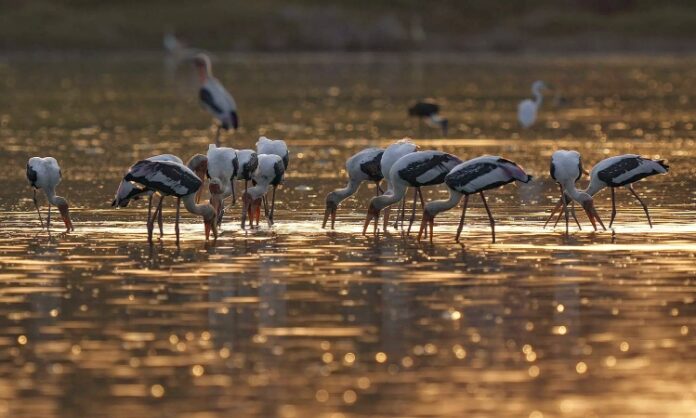Patna: Bihar forest department’s bid to enhance biodiversity received a major boost recently when the Central government announced inclusion of two reservoirs—Nagi and Nakti—in Jamui district as wetlands of international importance under the Ramsar convention.
Nagi and Nakti reservoirs, which were built for irrigation purposes, have been designated as the bird sanctuaries in 1984 for serving as habitats for migratory species, some of them endangered, for many years. With this, Bihar now boasts of three Ramsar sites, including the famous Kanwad Jheel in Begusarai.
Also Read: With 11 new ones, India get 75 Ramsar sites in 75th year of Independence
The Convention on Wetlands is the intergovernmental treaty that provides the framework for the conservation and wise use of wetlands and their resources. Almost 90% of UN member states, from all the world’s geographic regions, have acceded to become “Contracting Parties”.
Wetlands are vital for human survival. They are among the world’s most productive environments; cradles of biological diversity that provide the water and productivity upon which countless species of plants and animals depend for survival.
Also Read: Bihar readies investor-friendly tourism policy; focus on small places
With new entries, the number of wetlands of international importance in India has gone up to 82. Nagi and Nakti reservoirs are known for attracting attracting red-crested pochard (Netta rufina) and bar-headed geese (Anser indicus) on the Indo-Gangetic plain. Catchment areas of the dams features dry deciduous forests surrounded by hills.
As per reports of the department of environment, forest and climate change (DoEFCC), these wetlands provide habitats for over 150 species of birds, mammals, fish, aquatic plants, reptiles, and amphibians. Besides, they also offer shelter to threatened species such as the endangered Indian elephant and the vulnerable native catfish.
Also Read: 35% wetlands have disappeared since 1970, says expert
According to the Asiatic Waterbird Census 2023, the Nakti Bird Sanctuary reported 7,844 birds, the highest in the survey, followed by the Nagi Bird Sanctuary with 6,938 birds.
Forest and environment minister Prem Kumar said that the state government was committed to offset the damages to climate and conserve the pristine ecosystem. “The state government has taken many initiatives including planting of saplings in huge numbers, restoration of water flow in dying rivers and renovation of water bodies for conservation of environment and fight the climate change issues,” said Kumar, adding that special emphasis was being laid on conservation and development of wetlands in accordance with the state government’s goal of net zero by 2070.
Also Read: Govt plans urban amenities in Ganga’s bed, river experts cry foul
DoEFCC secretary Bandana Preyashi said, “Each forest division has prepared a five-year vision plan which is essentially a roadmap with the aim to achieve environmental goals. Jamui & Begusarai forest divisions have prepared a detailed plan to develop the three Ramsar sites for conservation & ecotourism purposes.”
A senior officer of the DoEFCC said that the they had submitted the proposal for getting Ramsar tag for three other wetlands including Gokul Jalashay, Bhojpur, Gogabil wetland, Katihar and Udaipur wetland, Bettiah on March 15 this year.




